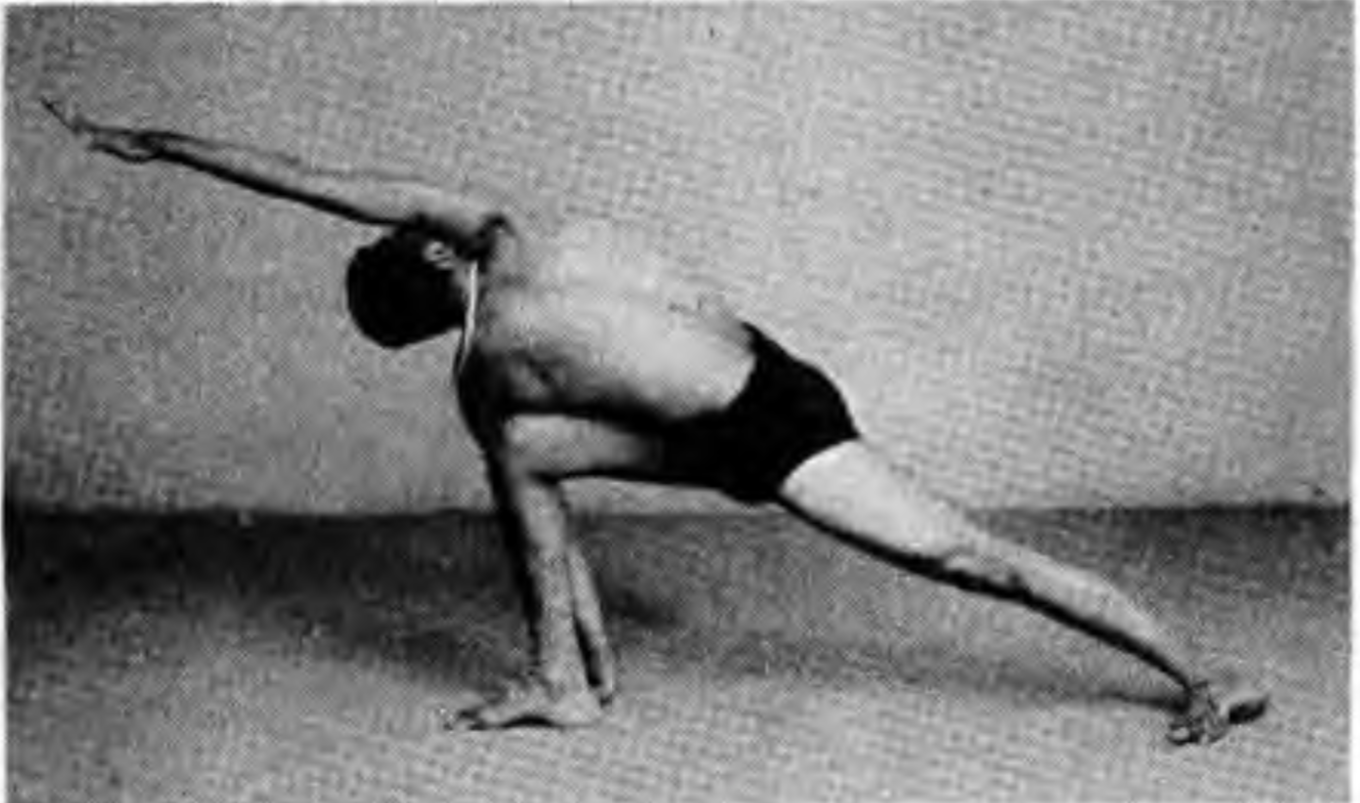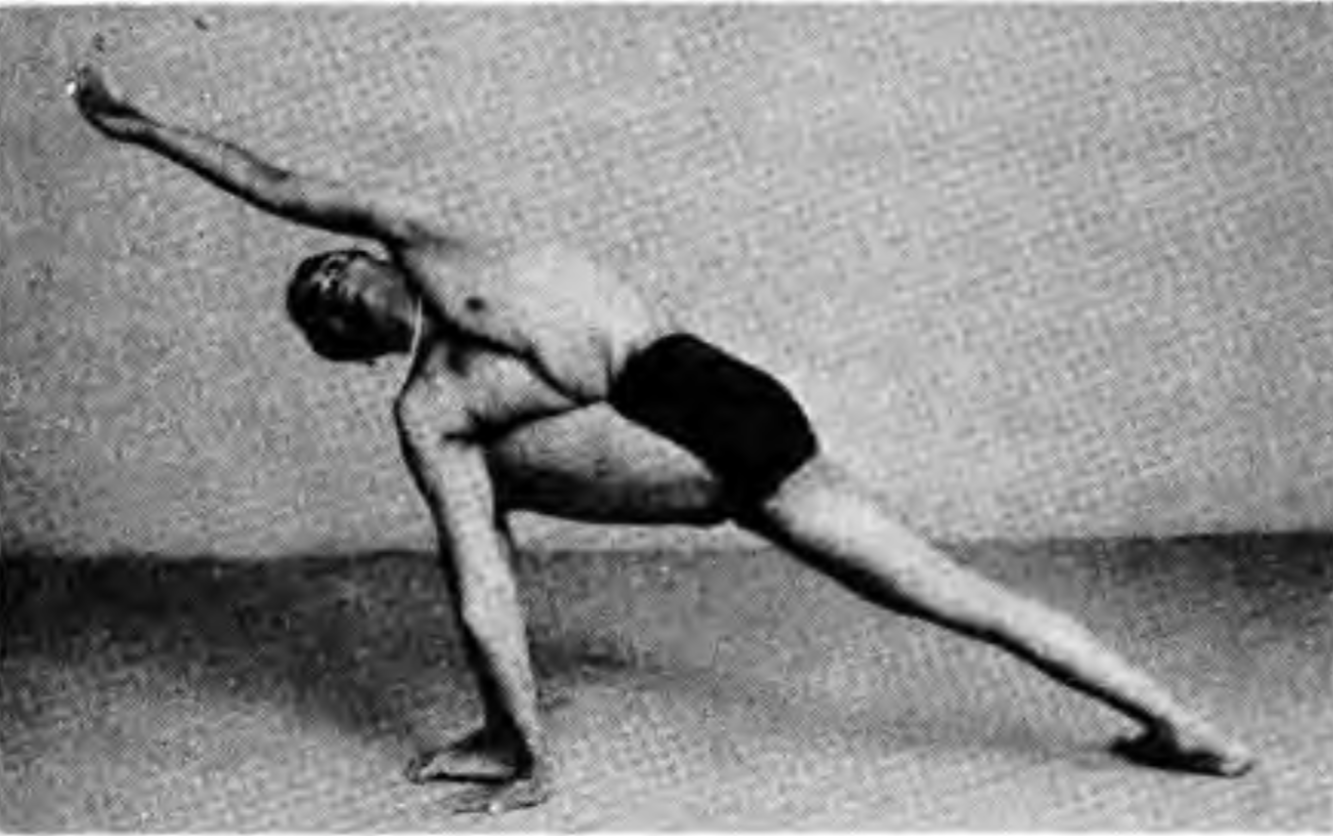Search your article
Parivrtta Parsvakonsana
Parivrtta Parsvakonsana – 8
Parivrtta means revolved, turned round or back. Parsva means side or flank. Kona is an angle. This is the revolving lateral angle posture.
Technique
1. Stand in Tadasana.
2. Take a deep inhalation, and with a jump spread the legs apart sideways 4 to 4! feet. Raise the arms sideways in line with the shoulders, palms down.
3· Tum the right foot sideways 90 degrees to the right and the left foot 6o degrees to the right, keeping the left leg stretched out and tightened at the knee. Bend the right leg at the knee until the thigh and the calf form a right angle and the right thigh is parallel to the floor.
4· Exhale, and rotate the trunk and the left leg so as to bring the left arm over the right knee. Rest the left armpit on the outer side of the right knee, and place the left palm on the floor by the outer side of the right foot.
5· Give a good twist to the spine (to the right), turn the trunk and bring the right arm over the right ear (as in the illustrations) and gaze up at the outstretched right arm. Keep the left knee tight throughout.
6. Hold this pose from half a minute to a minute, breathing deeply and evenly. Inhale, and lift the left palm from the floor. Raise the trunk and come back to position 2, by straightening the right leg and raising the arms.
7· Continue with exhalation on the left side, as in positions 3 to 5, reversing all processes.
8. In all cases where the movements are done first on one side and then on the other the time taken should be the same in each case. This general rule applies here.
Effects
This pose being a more intensified one than Parivrtta Trikonasana, has a greater effect. The hamstrings, however, are not stretched as much as in Parivrtta Trikonasana. The abdominal organs are more contracted and that aids digestion. The blood circulates well round the abdominal organs and the spinal column, and they are thus rejuvenated. The asana helps to remove waste matter from the colon without strain.

